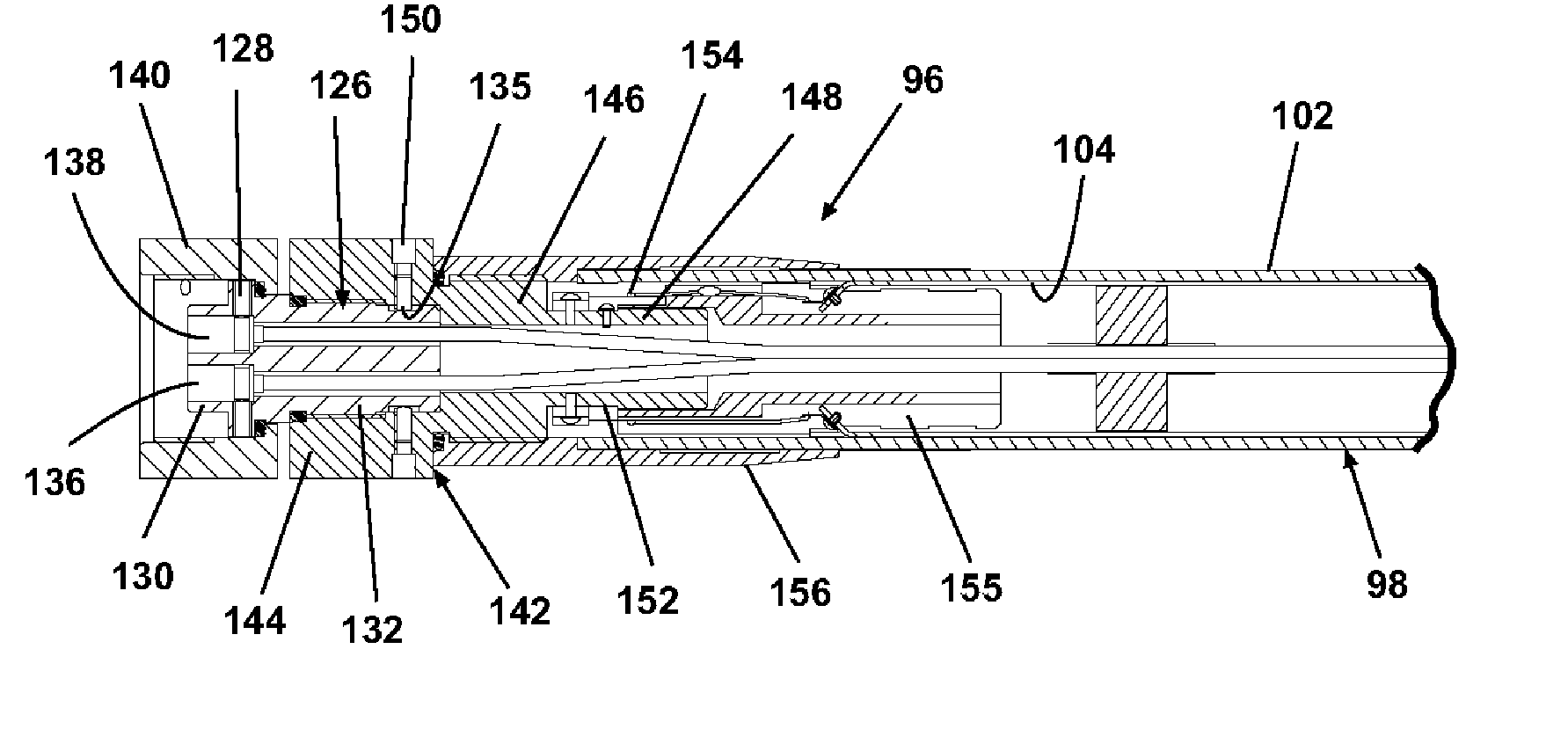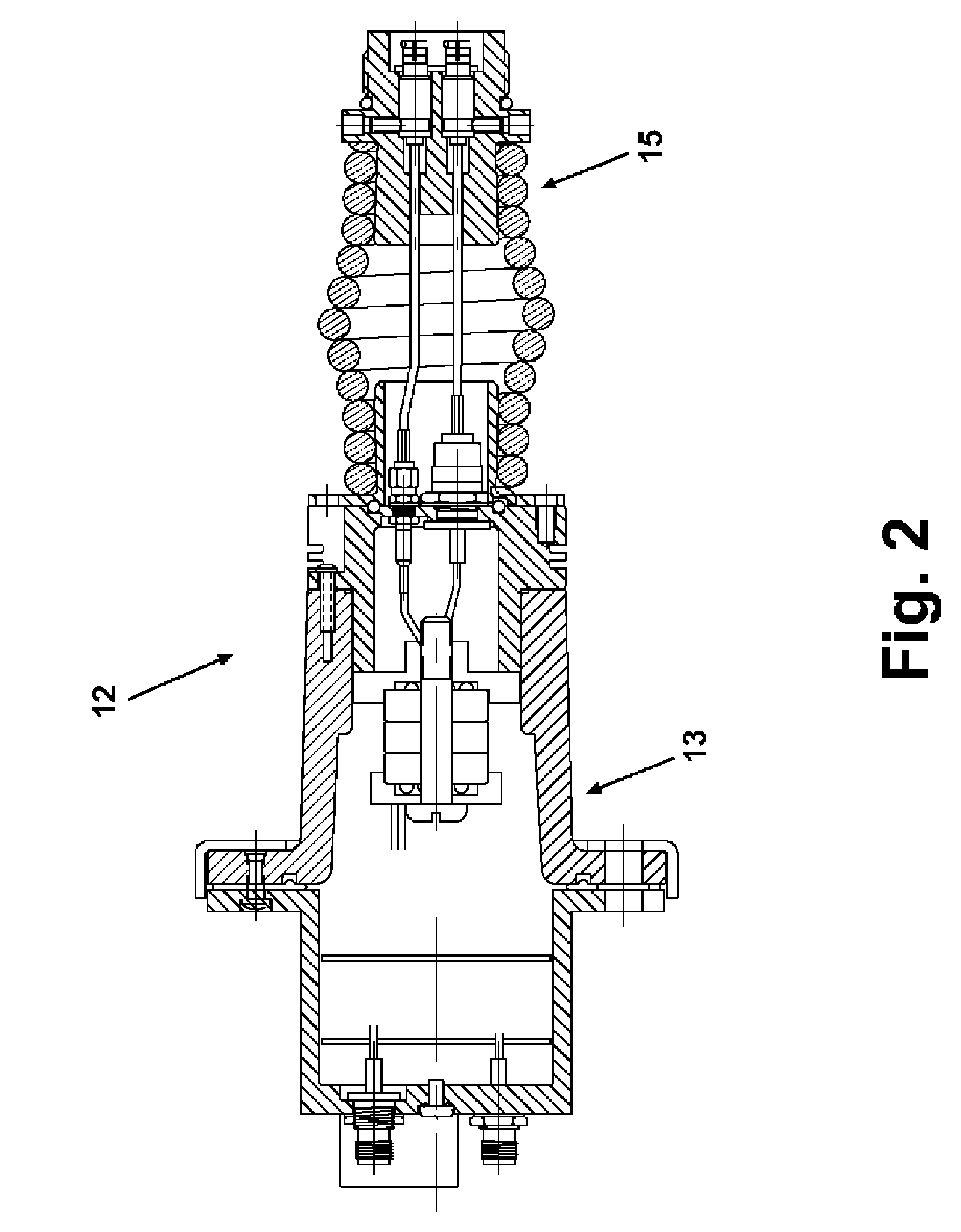Antenna with power matching circuit
a technology of power matching and antenna, which is applied in the direction of resonant antennas, antenna adaptation in movable bodies, disturbance protection, etc., can solve the problems of poor rf conductors between the conventional point-of-contact connectors and the problem of the connection between the radiator and the antenna leads remains. , to achieve the effect of effective balance of current distribution and impedance in conductive elements
- Summary
- Abstract
- Description
- Claims
- Application Information
AI Technical Summary
Benefits of technology
Problems solved by technology
Method used
Image
Examples
second embodiment
[0062]a multiband antenna 300 according to the invention is shown in FIGS. 18–24. The antenna 300 comprises a mount assembly 302 and a whip assembly 304. The mount assembly 302 comprises a base housing 306 with an annular mounting flange 308, a base connector 310, a spring plate 312, a barrel spring 314, and an upper spring holder 316. The base housing 306 in this embodiment is conventional, adapted to mount to a vehicle (not shown) by bolts through apertures in the annular mounting flange 308.
[0063]Looking now at FIGS. 19–21, the base connector 310 comprises a hollow cylindrical body portion 318 that is covered at one end by a plate 320 centered on the longitudinal axis 322 of the body portion. The plate 320 has several apertures 324 at its periphery and the base connector 310 has three receptacles 326. The receptacles 326 are sealed against moisture.
[0064]The spring plate 312 is fixedly mounted to the spring 314 and bolted to the base connector plate 310, and has a central apertur...
first embodiment
[0067]It will be understood that the physical structure of the electrical elements 366, 368 is similar to that in the first embodiment above, i.e., one or more transmission lines centered within a dielectric tube, wrapped with a conductive sleeve of copper or aluminum, all encased by a fiberglass housing. The lower electrical element 366 thus comprises a conductive sleeve 372 and three transmission lines 383, 384, and 385. The upper electrical element 368 comprises five conductive sleeves 396, 397, 398, 400, and 402, with one or two of the transmission lines 384, 385 centered therein. The transmission line 383 is a coaxial cable servicing the 30–175 MHz range. The transmission lines 384, 385 are also coaxial cables servicing the 225–450 MHz and 500–1000 MHz ranges, respectively. All of the transmission lines 383, 384, and 385 are centered within the conductive sleeves 372, 396, 397, 398, 400, and 402 by spacers 392.
[0068]At a lower end of the lower physical portion 360 is a male con...
PUM
 Login to View More
Login to View More Abstract
Description
Claims
Application Information
 Login to View More
Login to View More - R&D
- Intellectual Property
- Life Sciences
- Materials
- Tech Scout
- Unparalleled Data Quality
- Higher Quality Content
- 60% Fewer Hallucinations
Browse by: Latest US Patents, China's latest patents, Technical Efficacy Thesaurus, Application Domain, Technology Topic, Popular Technical Reports.
© 2025 PatSnap. All rights reserved.Legal|Privacy policy|Modern Slavery Act Transparency Statement|Sitemap|About US| Contact US: help@patsnap.com



